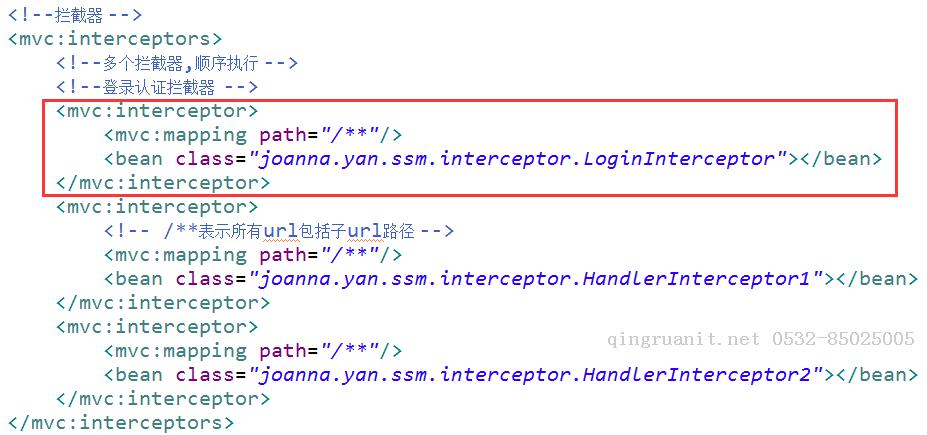MyBatis框架是如何去执行SQL语句?相信不只是你们,笔者也想要知道是如何进行的。相信有上一章的引导大家都知道SqlSession接口的作用。当然默认情况下还是使用DefaultSqlSession类。关于SqlSession接口的用法有很多种。笔者还是比较喜欢用getMapper方法。对于getMapper方法的实现方式。笔者不能下一个定论。笔者只是想表示一下自己的理解而以——动态代理。
笔者把关于getMapper方法的实现方式理解为动态代理。事实上笔者还想说他可以是一个AOP思想的实现。那么具体是一个什么样子东西。相信笔者说了也不能代表什么。一切还是有大家自己去查看和理解。从源码上我们可以看到getMapper方法会去调用Configuration类的getMapper方法。好了。一切的开始都在这里了。
DefaultSqlSession类:
public <T> T getMapper(Class<T> type) { return configuration.<T>getMapper(type, this);
}对于Configuration类上一章里面就说明他里面存放了所有关于XML文件的配置信息。从参数上我们可以看到他要我们传入一个Class<T>类型。这已经可以看到后面一定要用到反射机制和动态生成相应的类实例。让我们进一步查看一下源码。
Configuration类:
public <T> T getMapper(Class<T> type, SqlSession sqlSession) { return mapperRegistry.getMapper(type, sqlSession);
}当笔者点击进来发现他又调用MapperRegistry类的getMapper方法的时候,心里面有一种又恨又爱的冲动——这就是构架之美和复杂之恨。MapperRegistry类笔者把他理解存放动态代理工厂(MapperProxyFactory类)的库存。当然我们还是进去看一看源码吧。
MapperRegistry类:
1 public <T> T getMapper(Class<T> type, SqlSession sqlSession) { 2 final MapperProxyFactory<T> mapperProxyFactory = (MapperProxyFactory<T>) knownMappers.get(type); 3 if (mapperProxyFactory == null) { 4 throw new BindingException("Type " + type + " is not known to the MapperRegistry."); 5 } 6 try { 7 return mapperProxyFactory.newInstance(sqlSession); 8 } catch (Exception e) { 9 throw new BindingException("Error getting mapper instance. Cause: " + e, e);10 }11 }好了。笔者相信大家看到这一段代码的时候都明白——MapperRegistry类就是用来存放MapperProxyFactory类的。我们还是在看一下knownMappers成员是一个什么要样子的集合类型。
private final Map<Class<?>, MapperProxyFactory<?>> knownMappers = new HashMap<Class<?>, MapperProxyFactory<?>>();
knownMappers是一个字典类型。从Key的类型上我们可以判断出来是一个类一个动态代理工厂。笔者看到这里的时候都会去点击一个MapperProxyFactory类的源码。看看他里面又是一些什么东东。
1 public class MapperProxyFactory<T> { 2 3 private final Class<T> mapperInterface; 4 private final Map<Method, MapperMethod> methodCache = new ConcurrentHashMap<Method, MapperMethod>(); 5 6 public MapperProxyFactory(Class<T> mapperInterface) { 7 this.mapperInterface = mapperInterface; 8 } 9 10 public Class<T> getMapperInterface() {11 return mapperInterface;12 }13 14 public Map<Method, MapperMethod> getMethodCache() {15 return methodCache;16 }17 18 @SuppressWarnings("unchecked")19 protected T newInstance(MapperProxy<T> mapperProxy) {20 return (T) Proxy.newProxyInstance(mapperInterface.getClassLoader(), new Class[] { mapperInterface }, mapperProxy);21 }22 23 public T newInstance(SqlSession sqlSession) {24 final MapperProxy<T> mapperProxy = new MapperProxy<T>(sqlSession, mapperInterface, methodCache);25 return newInstance(mapperProxy);26 }27 28 }还好。代码不是很多,理解起来也不是很复杂。略看一下源码,笔者做了一个很大胆的猜测——一个类,一个动态代理工厂,多个方法代理。我们先把猜测放在这里,然后让我们回到上面部分吧。我们发现MapperRegistry类的getMapper方法里面最后会去调用MapperProxyFactory类的newInstance方法。这个时候我们又看到他实例化了一个MapperProxy类。MapperProxy类是什么。这个就关系到Proxy类的用法了。所以读者们自己去查看相关资料了。意思明显每执行一次XxxMapper(例如:笔者例子里面的IProductMapper接口)的方法都会创建一个MapperProxy类。方法执行之前都会先去调用相应MapperProxy类里面的invoke方法。如下
MapperProxy类:
1 public Object invoke(Object proxy, Method method, Object[] args) throws Throwable { 2 if (Object.class.equals(method.getDeclaringClass())) { 3 try { 4 return method.invoke(this, args); 5 } catch (Throwable t) { 6 throw ExceptionUtil.unwrapThrowable(t); 7 } 8 } 9 final MapperMethod mapperMethod = cachedMapperMethod(method);10 return mapperMethod.execute(sqlSession, args);11 }从源码的意思:从缓存中获得执行方法对应的MapperMethod类实例。如果MapperMethod类实例不存在的情况,创建加入缓存并返回相关的实例。最后调用MapperMethod类的execute方法。
到这里笔者小结一下,上面讲到笔者例子里面用到的getMapper方法。getMapper方法就是用来获得相关的数据操作类接口。而事实数据操作类邦定了动态代理。所以操据操作类执行方法的时候,会触动每个方法相应的MapperProxy类的invoke方法。所以invoke方法返回的结果就是操据操作类执行方法的结果。这样子我们就知道最后的任务交给了MapperMethod类实例。
MapperMethod类里面有俩个成员:SqlCommand类和MethodSignature类。从名字上我们大概的能想到一个可能跟SQL语句有关系,一个可能跟要执行的方法有关系。事实也是如此。笔者查看了SqlCommand类的源码。确切来讲这一部分的内容跟XxxMapper的XML配置文件里面的select节点、delete节点等有关。我们都会知道节点上有id属性值。那么MyBatis框架会把每一个节点(如:select节点、delete节点)生成一个MappedStatement类。要找到MappedStatement类就必须通过id来获得。有一个细节要注意:代码用到的id = 当前接口类 + XML文件的节点的ID属性。如下
1 public SqlCommand(Configuration configuration, Class<?> mapperInterface, Method method) { 2 String statementName = mapperInterface.getName() + "." + method.getName(); 3 MappedStatement ms = null; 4 if (configuration.hasStatement(statementName)) { 5 ms = configuration.getMappedStatement(statementName); 6 } else if (!mapperInterface.equals(method.getDeclaringClass())) { // issue #35 7 String parentStatementName = method.getDeclaringClass().getName() + "." + method.getName(); 8 if (configuration.hasStatement(parentStatementName)) { 9 ms = configuration.getMappedStatement(parentStatementName);10 }11 }12 if (ms == null) {13 if(method.getAnnotation(Flush.class) != null){14 name = null;15 type = SqlCommandType.FLUSH;16 } else {17 throw new BindingException("Invalid bound statement (not found): " + statementName);18 }19 } else {20 name = ms.getId();21 type = ms.getSqlCommandType();22 if (type == SqlCommandType.UNKNOWN) {23 throw new BindingException("Unknown execution method for: " + name);24 }25 }26 }看到这里的时候,我们就可以回头去找一找在什么时候增加了MappedStatement类。上面之所以可以执行是建立在XML配置信息都被加载进来了。所以MappedStatement类也一定是在加载配置的时候就进行的。请读者们自行查看一下MapperBuilderAssistant类的addMappedStatement方法——加深理解。SqlCommand类的name成员和type成员我们还是关注一下。name成员就是节点的ID,type成员表示查寻还是更新或是删除。至于MethodSignature类呢。他用于说明方法的一些信息,主要有返回信息。
笔者上面讲了这多一点主要是为了查看execute方法源码容易一点。因为execute方法都要用到SqlCommand类和MethodSignature类。
1 public Object execute(SqlSession sqlSession, Object[] args) { 2 Object result; 3 switch (command.getType()) { 4 case INSERT: { 5 Object param = method.convertArgsToSqlCommandParam(args); 6 result = rowCountResult(sqlSession.insert(command.getName(), param)); 7 break; 8 } 9 case UPDATE: {10 Object param = method.convertArgsToSqlCommandParam(args);11 result = rowCountResult(sqlSession.update(command.getName(), param));12 break;13 }14 case DELETE: {15 Object param = method.convertArgsToSqlCommandParam(args);16 result = rowCountResult(sqlSession.delete(command.getName(), param));17 break;18 }19 case SELECT:20 if (method.returnsVoid() && method.hasResultHandler()) {21 executeWithResultHandler(sqlSession, args);22 result = null;23 } else if (method.returnsMany()) {24 result = executeForMany(sqlSession, args);25 } else if (method.returnsMap()) {26 result = executeForMap(sqlSession, args);27 } else if (method.returnsCursor()) {28 result = executeForCursor(sqlSession, args);29 } else {30 Object param = method.convertArgsToSqlCommandParam(args);31 result = sqlSession.selectOne(command.getName(), param);32 }33 break;34 case FLUSH:35 result = sqlSession.flushStatements();36 break;37 default:38 throw new BindingException("Unknown execution method for: " + command.getName());39 }40 if (result == null && method.getReturnType().isPrimitive() && !method.returnsVoid()) {41 throw new BindingException("Mapper method '" + command.getName()
42 + " attempted to return null from a method with a primitive return type (" + method.getReturnType() + ").");43 }44 return result;45 }重点部分就是这里,我们会发现我们转了一圈,最后还是要回到SqlSession接口实例上。完美的一圈!笔者用红色标出来了。
看到了这里我们就清楚调头去看一下SqlSession接口实例吧。

